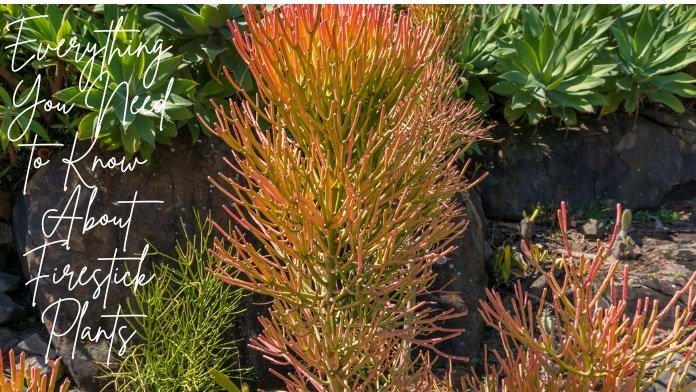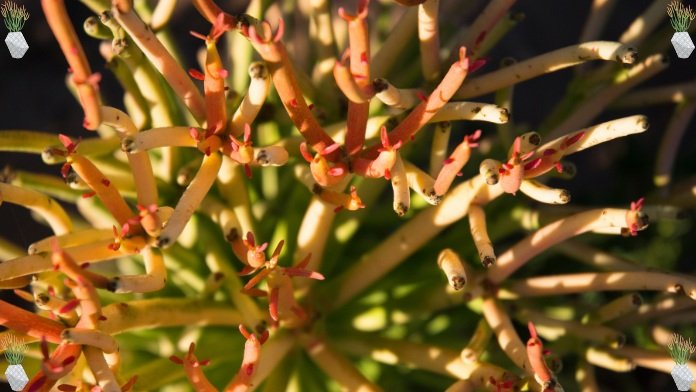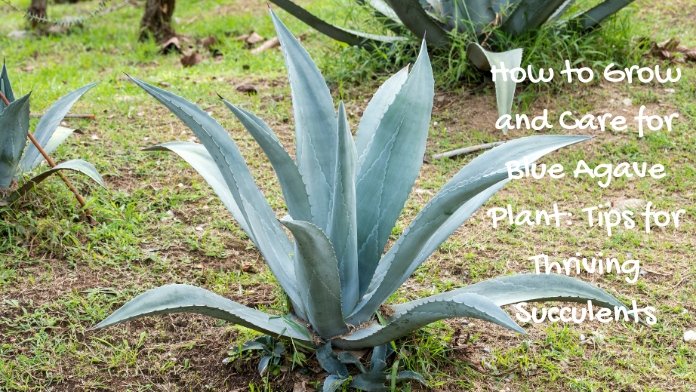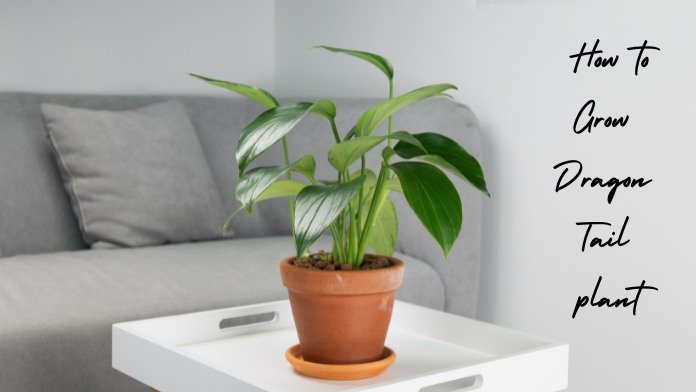
With its striking appearance and low maintenance needs, the Firestick plant has become a favorite among gardening enthusiasts and landscapers.
Known for its vibrant colors and unique structure, this plant adds visual interest to any garden and provides several environmental benefits.
What is the Firestick Plant?
Botanically classified as Euphorbia tirucalli, the Firestick plant has several common names, including Pencil Cactus, Milk Bush, and Aveloz.
Despite its cactus-like appearance, it belongs to the spurge family Euphorbiaceae, which includes a wide variety of flowering plants.
Firesticks Overview
- NAME OF THE GENUS: Euphorbia tirucalli
- COMMON NAME: Fire sticks
- ADDITIONAL COMMON NAMES: Firesticks, Rosea, Indian Tree Spurge, Red Pencil Cactus
- PLANT TYPE: Houseplant, perennial, shrub, tree
- LIGHT: Sun
- HEIGHT: 1 to 25 feet
- WIDTH: 1 to 10 Feet
- FLOWER COLOR: Yellow
- FOLIAGE COLOR: Blue/Green
- SEASON CHARACTERISTICS: Winter interest
- SPECIAL FEATURES: Good for containers, low maintenance
- ZONES: 10, 11, 9
- PROPAGATION: Stem cuttings
- PROBLEM SOLVERS: Deer Resistant, Drought Tolerant
Firestick Plant Benefits
The Firestick plant offers numerous benefits. Environmentally, it helps with soil stabilization and can thrive in nutrient-poor conditions, making it a xeriscaping-resistant addition.
Aesthetically, its vibrant colors and unique structure make it a standout feature in any garden.
Physical characteristics
The Firestick plant is famous for its thin, cylindrical stems resembling pencils, hence the name Pencil Cactus. These stems can range in color from green to bright red, especially during colder months or when under stress, adding a fiery appearance to the plant. The firestick plant can grow up to 25 feet tall in its native habitat but typically remains smaller in home gardens.
Firestick Plant Varieties
There are several popular Firestick plant varieties, each with unique characteristics. The standard variety, Euphorbia tirucalli, is the most common and is known for its vigorous growth and adaptability. Another popular cultivar is ‘Rosea,’ which turns a deeper red under the right conditions, making it a striking addition to any plant collection.
Where to plant firesticks
Firesticks is a spurge, also called spurge, native to Africa. It can be grown outdoors in USDA hardiness zones 9 through 11 in areas that never freeze or as a houseplant. It needs fast-draining soil and full sun. Firesticks plants also need warm temperatures and low humidity.
How and when to plant firesticks
The best time to plant fire sticks outdoors is spring, early summer, or early fall. Avoid planting in the middle of summer or when the plant stops growing in winter. Water the new plant once a week until new roots develop.
Once the plant has rooted, allow the soil to dry completely before watering again. Larger plants may need to be staking until they have established roots in the soil. Remove the cuttings when the plant is secure, usually in two to three months. Outdoors, the plant can grow up to 25 feet tall.
When growing fire sticks as a houseplant, add high-quality potting soil formulated for succulents to a container with excellent drainage. Select the sunniest spot in your house for this sun lover. The more sun it receives, the brighter the plant’s colors. It grows less when planted indoors.
Growth conditions
To successfully grow the Firestick plant, it is essential to mimic its natural environment. Prefers soils with good drainage, such as sandy or rocky substrates. The plant thrives in full sun but can tolerate partial shade.
Overwatering is a common mistake. The Firestick plant prefers to dry out completely between watering, so it only requires occasional moisture. The Firestick cactus is an easy succulent to grow.
The firestick plant thrives in bright sunlight, warm temperatures, and low humidity. Make sure the plant grows in well-draining soil. Water the plant only occasionally when the soil dries out.
Plant the Firestick Plant
Choosing the right location is crucial for the Firestick plant. Select a sunny location with well-drained soil. To plant, dig a hole to accommodate the root ball, place the plant in the hole, and fill it with soil. Water sparingly after planting to help establish roots.
Care and Maintenance

Maintaining the Firestick Plant involves minimal effort. Pruning is necessary to control its size and shape, and it’s best done with gloves to protect from the plant’s sap. During the growing season, fertilize sparingly, if at all, using a balanced, diluted fertilizer.
light
Pencil cactus needs full sun for optimal growth, at least six hours daily. If you’re indoors, your best bet is next to a south-facing window. Mild, warm temperatures, from 65°F to 70°F, are best for growth.
During cold spells, ensure your cactus is indoors when temperatures drop below 50°. Keep away from cold drafts. On the other hand, heat is usually not a problem for cactus, as it can withstand a constant temperature of 100°.
water
Being succulents, pencil cacti can store water in their fleshy stems and leaves, meaning they like little water. Water with fresh water once every 2 to 3 weeks in the summer, when the top inch of soil is dry, and perhaps once a month in the winter. When snapping cold, it does not need to be watered.
soil
If you are growing pencil cactus as a houseplant in your home, make sure you have sandy, well-draining soil. Excess moisture must be drained from the soil. Otherwise, there will be a risk of root rot, the most common problem with indoor plants.
Grow pencil cacti in pre-made cactus soil or make your own cactus soil with peat moss, coarse materials, and amendments. Sandy soil is good. Compacting soil is not possible.
Pencil cactus fertilizer
Leguminous plants can be fed with a controlled-release fertilizer at the beginning of the growing season. You can apply it weekly with a weak liquid solution.
A 20-20-20 balanced fertilizer can be used at a quarter strength for large, mature outdoor plants. Most soils will do well with a 6-4-6 fertilizer. Your pencil cactus doesn’t like any fertilizer when it’s dormant in the fall and winter.
Pest and Disease Management
The Firestick Plant is relatively pest-resistant but can occasionally attract common garden pests like mealybugs and spider mites. The Firestick Plant can face issues like stem rot if overwatered. To resolve this, ensure proper drainage and reduce watering frequency.
Yellowing stems might indicate too much water or insufficient light; adjusting these conditions usually restores the plant’s health.
Problems growing pencil cactus
Overwatering fire plant sticks can be problematic. If you overwater the plant and the soil has poor drainage, the roots will rot under the soil. Be sure to water the plant infrequently, especially when it’s not hot. Check the soil moisture and water only if you find it completely dry.
Consider using a loose-textured mix if your soil is holding too much water. Low light conditions can cause cacti to chlorotic and yellow leaves. In this case, move it to a location with more sunlight or provide a grow light.
Pencil cactus disease
Phomopsis is a fungal condition that can develop on your pencil cactus. It is caused by the pathogenic fungus Phomopsis juniperovora, which stimulates the development of gray, sunken tips on pencil cacti. The fungus spreads through wind, rain, and infected soil.
Overwatering creates conditions where fungus thrives. If this disease occurs, wear gloves, cut off the infected tip with sterile pruning shears, and cover the wound with sulfur.
Root rot is a disease that develops in pencil cactus plants when growing conditions are inadequate. It causes soft, brown bases and leaves on cacti. Remove the damaged areas and transplant your pencil cactus into fresh soil. If the situation does not improve after this, you must obliterate the cactus, as there is no cure for root rot.
insects
Aphids, mealybugs, and mites are common pests of houseplants, mostly pencil cacti. Each of these collects on your succulents and sucks the plant’s sap, causing curled leaf tips, dead stems, and, in extreme cases, leaf drops. Treat your cactus first by wiping it down with a damp cloth.
Propagation Methods
Propagating the Firestick Plant is straightforward. The most common method is stem cuttings. Cut a healthy stem, let it dry for a few days to form a callus, then plant it in well-draining soil.
Seed propagation is less common but can be done by sowing seeds on a sandy substrate and keeping them moist until they germinate.
You can propagate stick cactus with some cuttings taken from the new or healthy stems. This pencil cactus cutting develops tiny roots. Wear gloves and eye protection when you cut into the cactus.
Dry your stem cuttings out before planting them in the new cactus mix. Otherwise, the cut end will rot in the soil before it can grow new roots.
Toxicology
The plant contains a caustic milky white sap that can cause severe irritation in contact with skin, mucous membranes, and eyes.
Ingestion may cause mouth and stomach irritation and may cause pain and diarrhea. This plant is classified as a chemical skin irritant by the Poison Control Center.
The botanical name of the plant is Euphorbia Tirukalli. Other common names are firestick cactus, pencil tree, pencil cactus, and milk bush. This plant is not on the LAUSD Approved Plant List. If you have firestick plants on campus, they should be removed or disposed of immediately.
If planted as part of a garden or school landscape, contact your complex project manager to remove the plant from the site safely.
Firestick plants for pots and transplants
Report firewood plants in the spring after they start growing again. Firesticks do not need to be repotted every year, but over time, they can become too heavy.
Use a heavy pot to prevent tipping and stake or support newly planted plants as they grow roots in the new soil.
Conclusion
Firestick plants are a fantastic choice for gardeners looking for a low-maintenance but visually stunning addition to their landscape.
Their ability to thrive in difficult conditions, along with their unique appearance, make them a plant to consider for both new and experienced gardeners.
FAQ
Is the Firestick plant toxic to pets?
Yes, it is toxic to pets and can cause severe irritation if ingested or if the sap comes into contact with the skin.
How often should I water my Firestick plant?
Water your Firestick plant sparingly. Let the soil dry thoroughly between watering, usually every few weeks.
Can I grow a Firestick plant indoors?
Yes, if it receives plenty of sunlight. Place it near a south-facing window for best results.
What should I do if my Firestick plant’s stems turn yellow?
Yellowing stems often indicate excess water or insufficient light. Adjust your watering schedule and make sure the plant receives adequate sunlight.
How can I protect myself when handling the Firestick Plant?
Wear gloves and protective glasses when handling the Firestick plant to avoid contact with the toxic sap. Wash your hands thoroughly after handling.
Is it possible to submerge my Cactus Pencil underwater?
Signs of lack of water are usually crispy brown tips and wrinkled flesh. The difference between overwatering and underwatering symptoms can be difficult to discern, so it’s always best to feel the soil to see if the moisture matches your diagnosis.
RELATED POSTS
View all


